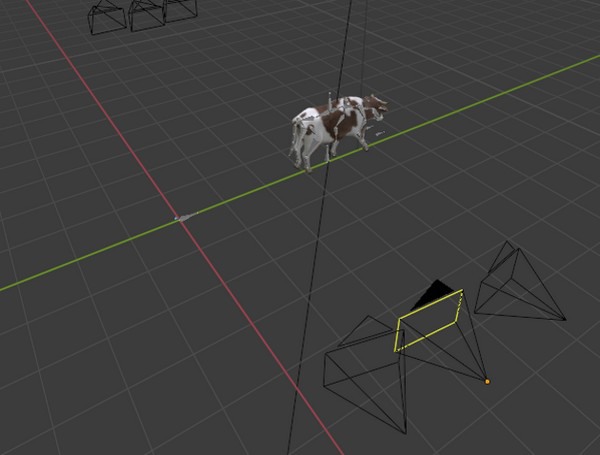The Industry 4.0 revolution impacts all production processes, and digital twinning plays an important role in it. That is a virtual representation of reality directly linked to it. Can this technology also be applied in the agro-food sector? Marcel Roosen, manager of the Fontys GreenTechLab, investigates the possibilities for digital twins of animals and plants through the Digital Twin Academy project.
Virtual Plant Twin
GreenTechLab is located within Fontys Hogeschool Venlo and deals with technical questions within agro, food, and logistics. Digital twinning offers a unique challenge; where an industrial process and IoT solutions can gather data and link it back to reality, this is not possible with a living organism. Therefore, applications of digital twins in agro and food work differently but can mean a lot in process optimization, data collection, and signaling. Roosen and his team started two pilot projects to explore this; lameness detection in animals and the digital cultivation of peppers.

Animal welfare with digital twins
In livestock farming, large numbers of animals are often kept, making timely detection of health problems a challenge. Gait is a key indicator of potential lameness, which can have far-reaching consequences. Spotting this in time can make all the difference, explains Roosen: "A digital twin of a cow can help analyze video images quickly and effectively. What we have done is create a system that can digitally reproduce the images of a cow. In other words, a virtual environment that makes a digital twin of the cow. We trained the system to recognize abnormal walking behavior in cows. The technique used for this is called recurrent neural networks, which can now be used to detect unhealthy walking behavior. This benefits animal welfare and has many possible applications in animal husbandry, including for other diseases."

Growing peppers digitally
A similar application has been studied for fruit and vegetable cultivation, where a digital twin has been developed for sweet pepper plants. This is challenging because it involves an AI application that has to learn to recognize peppers: "We recognize peppers instinctively, based on the experience and knowledge of the farmer. A system has to learn that first, which takes a lot of time, but it also offers many opportunities. It may need thousands of iterations to make classification possible. What we got here is a translation of what is in the greenhouse into comprehensible and analyzable data. How many peppers are growing in the greenhouse, and how well do they grow? What is their density? Where are the areas of focus? That is the digitalization that is missing in cultivation." For the grower, this has many advantages; more insight and predictability in the harvest, better planning, and preventive action to keep the plants healthy. In other words, healthier business processes.

Accelerating digitalization and the 'digital greenhouse'
The image recognition technique (convolutional neural networks) used in the pepper case has existed for some time already. The innovation lies in the application, where the content of a greenhouse is converted into a dataset that offers many possibilities. Growers can use this to work in a data-driven way. In disease management, too, digital twinning can have a signaling function; a plant disease starts small but often grows exponentially.
A digital twin accelerates opportunities for digitalization and makes a digital greenhouse possible, claims Roosen: "In theory, you can reproduce the entire greenhouse as a digital twin and control it digitally. From humidification and air circulation to the day and night cycle. The big challenge here is trust in the system and acceptance of digital twins and AI applications. For an entrepreneur, the technology is a kind of black box; the process cannot be explained. With Virtual Plant Twin, we are taking a step forward to prove the validity of the technology."
Digital Twin Academy
Virtual Plant Twin is a pilot project within Digital Twin Academy. Within this larger project, digital twins are made accessible to SMEs, and applications of the technology are explored in a number of projects. This specific project is being carried out by the GreenTechLab knowledge center, part of Fontys Hogeschool Techniek & Logistiek, with support from other institutes, including Fontys Hogeschool ICT and Fontys Engineering.
Interested parties can find more information and contact us via www.fontys.nl/dta.
The Digital Twin Academy is an Interreg Euregio Meuse-Rhine (EMR) project. The program is financed by the European Regional Development Fund and is a collaboration between various authorities, research and education partners, and partners from the business community.
Source: Fontys Hogeschool
